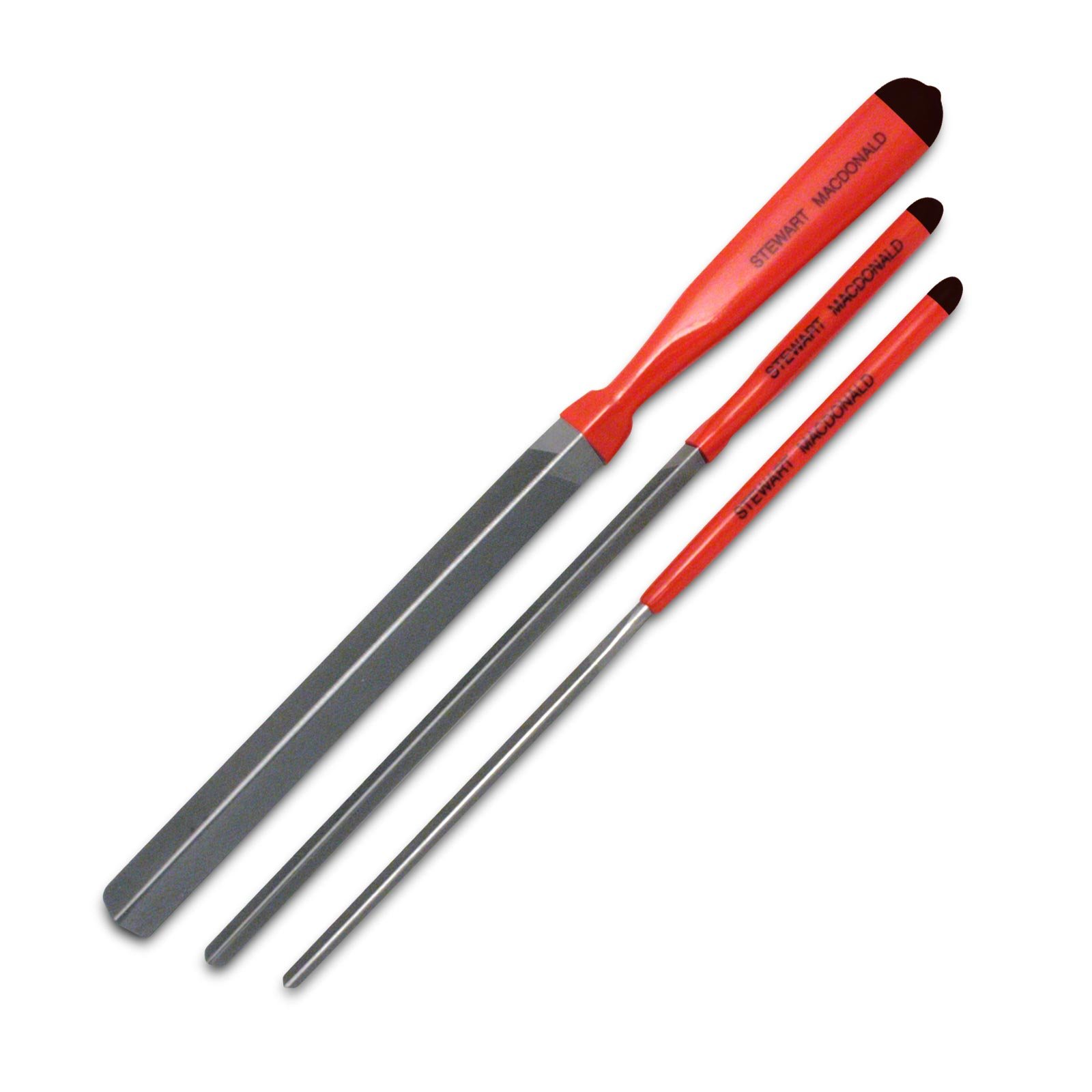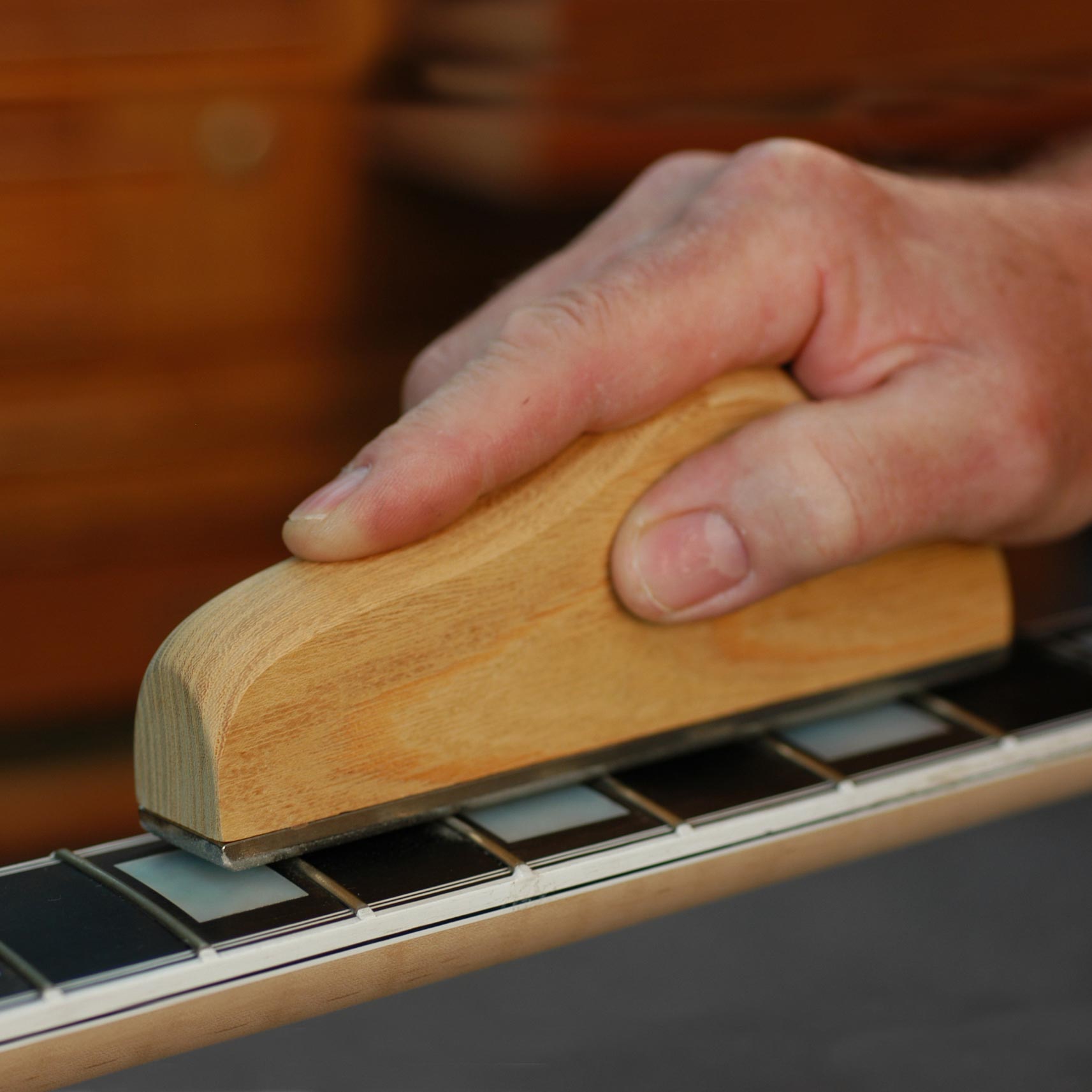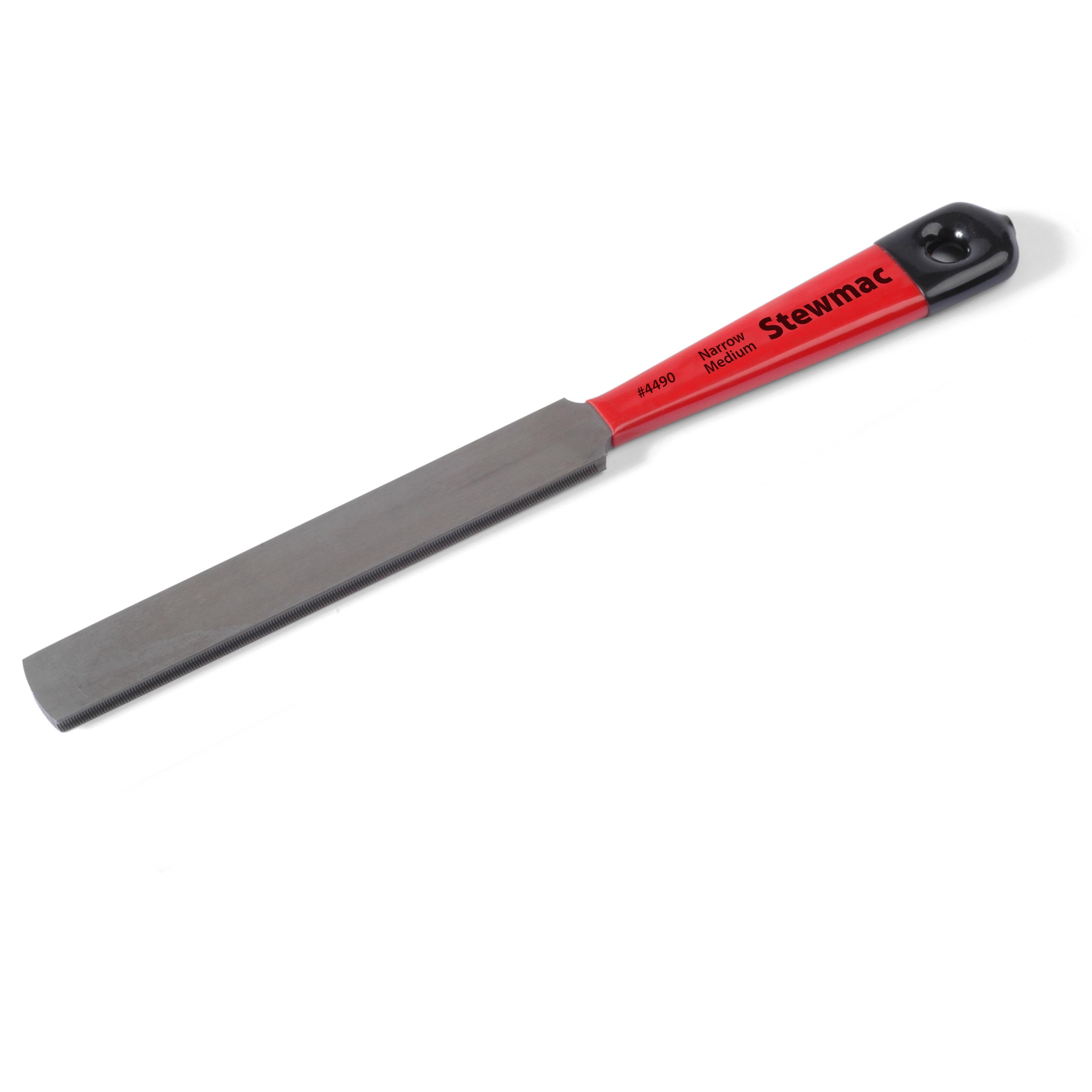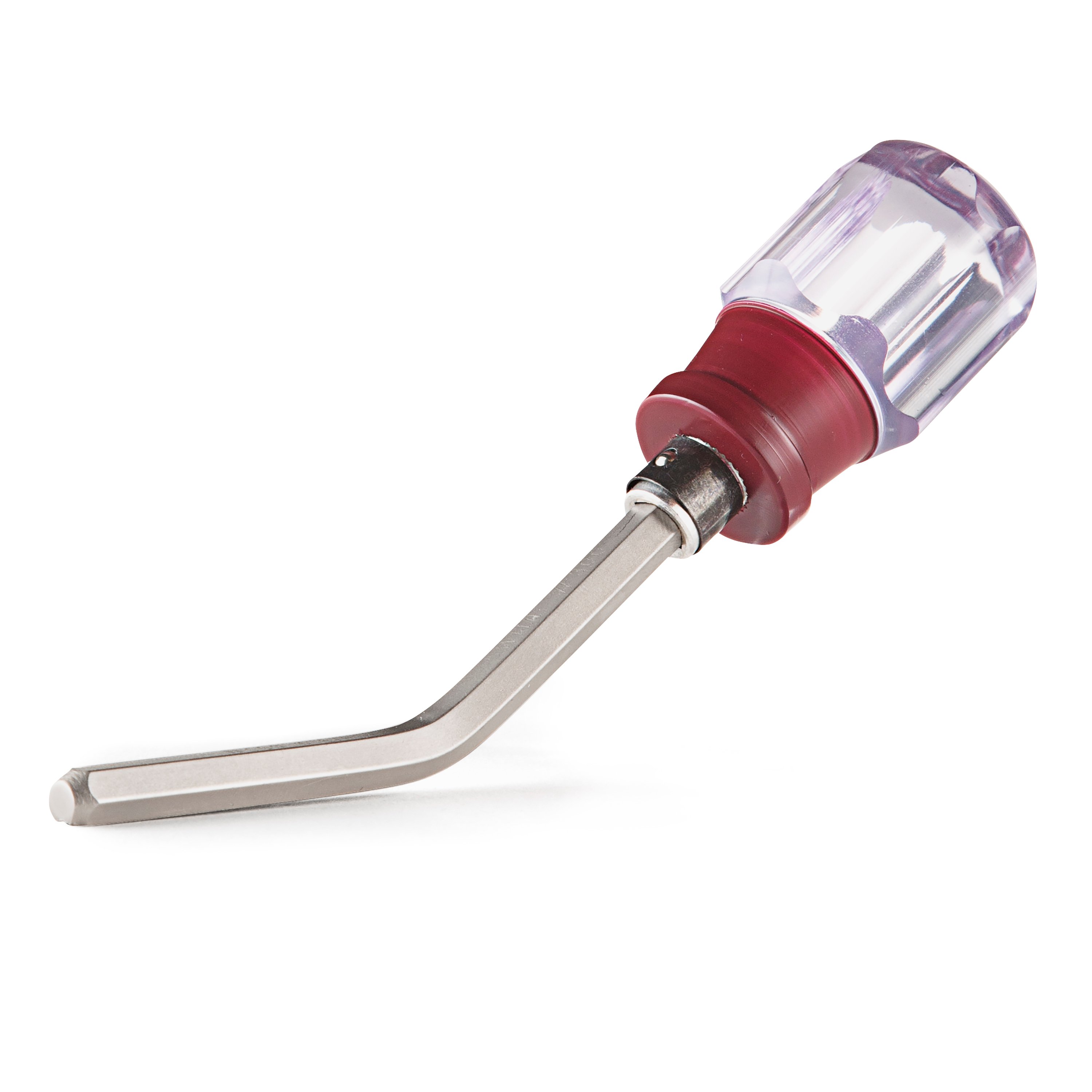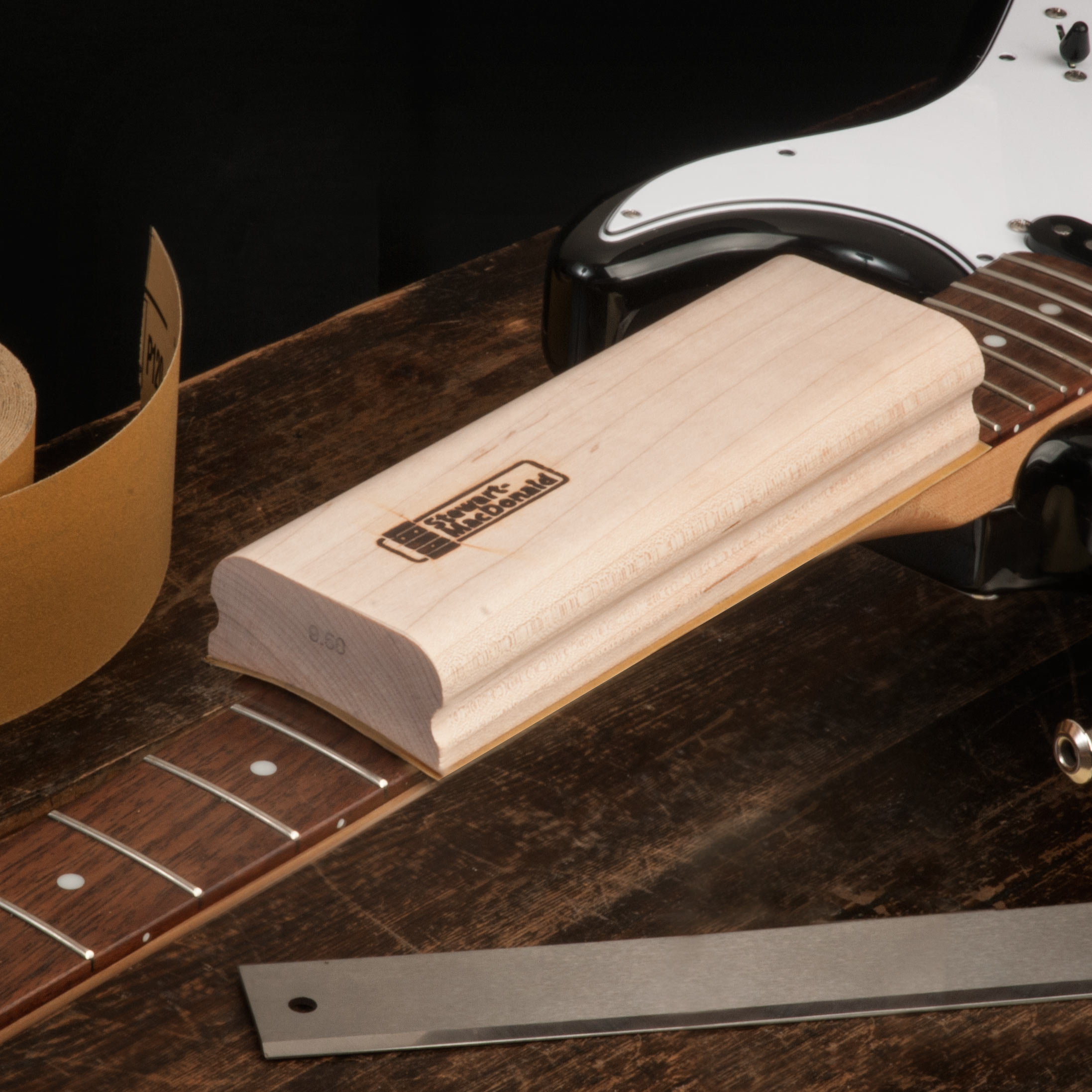How to shape frets with a 3-corner file
Issue 250 October 08, 2015
There’s a knack to using a StewMac 3-Corner Fret Dressing File, and Erick Coleman shows you what that’s about. He demonstrates the rolling motion that creates a nice rounded fret with an accurate “land” down the center.
About the guitar in this video
This Kalamazoo solidbody from the 60s is one of Erick’s favorite guitars for playing with his band, the D-Rays.
In this Trade Secrets video
- Erick’s go-to fret crowning file for over twenty years
- Bluing the frets (browning, redding, whatever you like…)
- What makes the 3-Corner Fret Dressing File so versatile
Video Transcription
Erick Coleman: I've tried every fret crowning file ever sold, I think. Concave, quarter round. I've used them all at some point or another. More often than not though, I reach for my 3-corner files when it's time to crown frets. I've really got some good ones in here, been using them for at least 20 years. [on-screen text reads: StewMac 3-Corner Fret Dressing Files]
Fret shaping techniques
What I really like about the 3-corner file is the control that it gives me. I can see the material coming off as I'm filing on the fret, bring the land in to a very narrow strip. And when I'm talking about land, I'm talking about this flattened surface. When you freshly level your frets, that's pretty wide. And for better intonation and feel, you want this to be pretty narrow, almost as narrow as you can get it. I'm going to blue the fret with this marker and you can use any color, brown, red, whatever. I just like blue because it allows you to see the material coming off as you're actually pushing it off with the file. It's kind of a guide. I just generally want to run the file down the edge of the fret. I'm starting to tilt it, roll it into the fret, actually. The 3-corner file can seem to be like it's a little tricky to use just because it's not a concave file.
It doesn't have a shape that matches the top of the fret. So it can be kind of confusing when you're looking at it to think, how can I get a nicely rounded fret out of there? But at every stroke, I keep rotating the file inward just a little bit.
Narrow and balanced fret surface
This is increasing the angle over the top and giving me a more narrow surface, go back and forth on either side just to help the balance so you're not really hogging off a lot of material on one side of the fret and then have to get caught up on the other.
You can actually see the metal coming off. You're not obscuring or hiding the fret underneath a file that's removing stuff blindly. You can actually watch the shavings peel off of here. A file safe ground, you notice there, the hard edges are ground off of it and that is to help protect your fretboard. But even then, I like to tape off the board just to avoid any kind of file marks that might get in there [on-screen text reads: Binding Tape]. It's always important to keep your tools clean with this kind of work so you don't drag any of the shavings into the fret. It might be hard to get the scratches out if you do.
In the end, what you're looking for is a nice even shape on both sides. You don't want it to be lopsided one way or the other. You just want it nice, rounded up, nice, thin, flat down the middle, and then you're good.
When you've gotten to that point [on-screen text reads: 3-Corner File StewMac #1602 Medium, 8"], you'll realize why the 3-corner file is really the preferred file for a lot of professionals. A lot of guys use this thing as a regular part of their work just because of the accuracy that you can achieve with it. Another thing I really like about the 3-corner file is, it's relatively inexpensive. So for just a little dough, you can get an excellent tool that will yield totally professional results and with a little practice, your technique and speed will improve and you'll be able to whip through a neck in no time.

